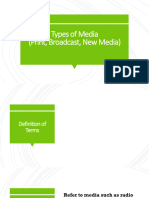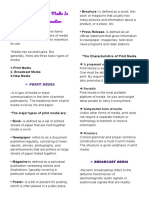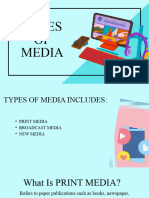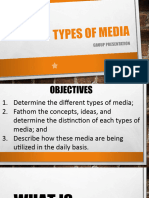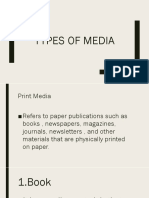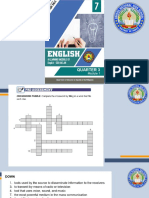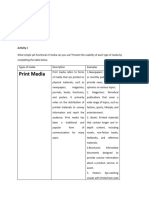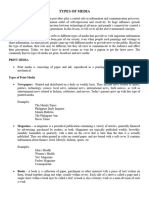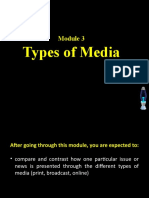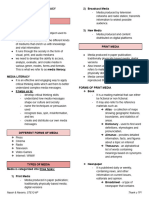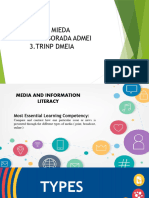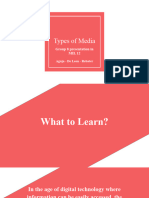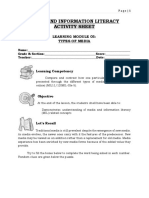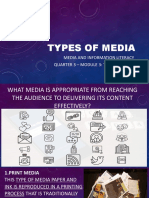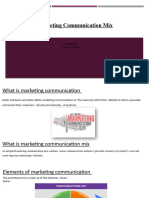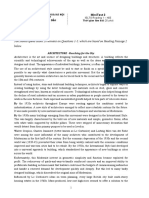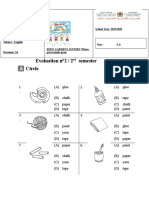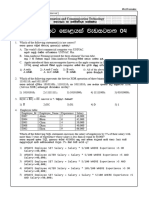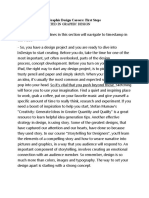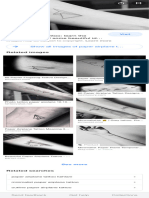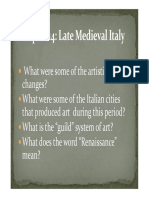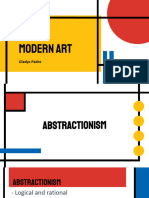0% found this document useful (0 votes)
15 views4 pagesMIL Lesson
The document outlines various types of media in the information age, including print media, broadcast media, new media, and film, detailing their characteristics and subcategories. It highlights the evolution of media, emphasizing the convergence of traditional and digital platforms, as well as the rise of digital print media and streaming services. Additionally, it discusses the unique features of each media type and their impact on communication and information dissemination.
Uploaded by
crystalmaemedallaCopyright
© © All Rights Reserved
We take content rights seriously. If you suspect this is your content, claim it here.
Available Formats
Download as PDF, TXT or read online on Scribd
0% found this document useful (0 votes)
15 views4 pagesMIL Lesson
The document outlines various types of media in the information age, including print media, broadcast media, new media, and film, detailing their characteristics and subcategories. It highlights the evolution of media, emphasizing the convergence of traditional and digital platforms, as well as the rise of digital print media and streaming services. Additionally, it discusses the unique features of each media type and their impact on communication and information dissemination.
Uploaded by
crystalmaemedallaCopyright
© © All Rights Reserved
We take content rights seriously. If you suspect this is your content, claim it here.
Available Formats
Download as PDF, TXT or read online on Scribd
/ 4


